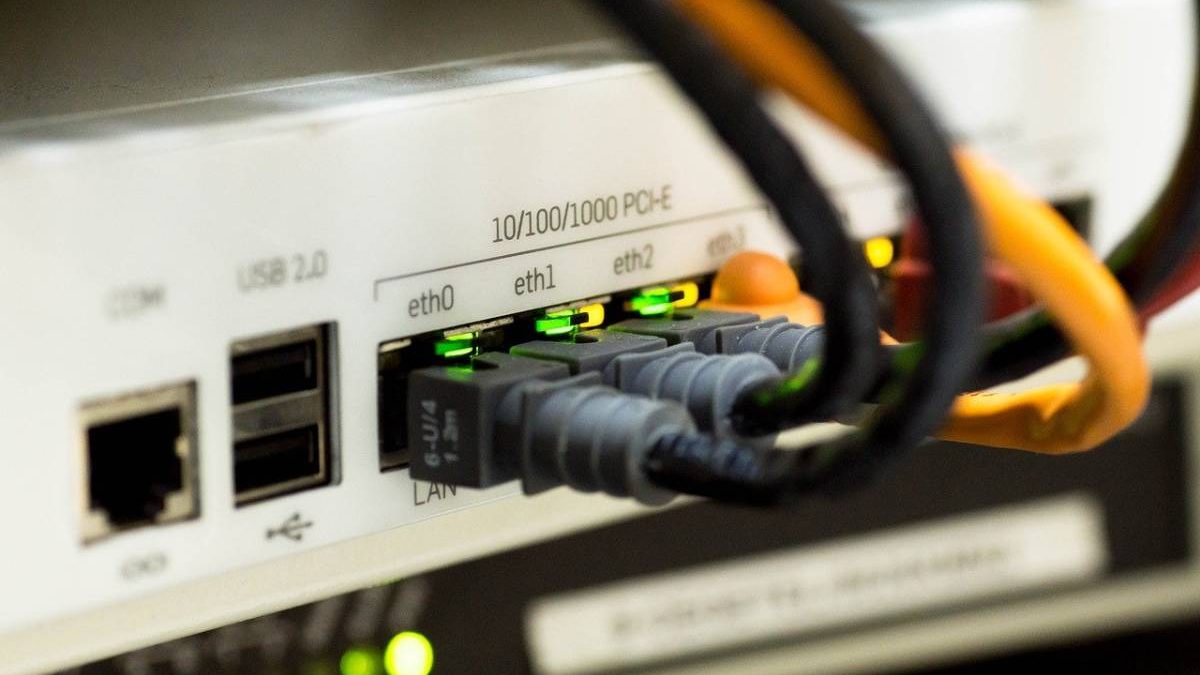Network Cabling Types
Computer networks are complex structures that play a significant role in business operations in the current digital era. While a computer network is not usually housed in giant data centers, this does not take away from its complexity. Regardless of the size of the computer network, network cabling is a significant part of the system.
Network cables help transfer data between computers and various devices.
Table of Contents
Network cabling types
There are four types of network cabling. They are;
Coaxial network cabling
Coaxial network cabling has been around since the establishment of computer networking. However, the cables have evolved significantly due to increasing bandwidth demands. Coaxial network cables have a single copper conductor at the center with plastic layers to provide insulation between the center conductor and braided metal shield. The role of the metal shield is to block outside interference from fluorescent lights, motors, and various computers. Coaxial network cabling is highly resistant to signal obstruction. It can handle greater cable lengths between network devices. In simpler terms, they can carry many signals a long way. However, it can be complex to install. There are two types of coaxial cables; thick and thin coaxial cables.
Shielded twisted pair cables or ethernet cables
Ethernet cables, also known as shielded twisted pair cables, use special wires used in copper telephone wiring used for business installations. They are the backbone of many computer networks because they are easy to work with, lightweight, and come in a wide range of lengths. Their lengths can determine their speed and capacity for carrying data. Ethernet cables connect modems and computers to routers, various devices, and computers to others.
Ethernet cables come with recognizable connectors known as RJ-45 connectors. They look like connectors at the end of old landline phone cords. They are known as twisted pair cables because they consist of two sets of conductors in the form of copper wires. The two cables run parallel to each other to form a circuit and twist around each other. Shielded twisted pair cables are perfect if you want to set up cables in an area with potential interference. They are also incredible for expanding the distance between cables.
Unshielded twisted pair cables
UTP cables are commonly applied in telecommunication and computer markets. UTP cables feature conductors forming a single circuit. They are twisted around each other to cancel any form of electromagnetic interference from any external sources.
Fiber optic network cabling
Fiber optic cables are the new gold standard in the network cabling industry. These cables are fast and immune to electromagnetic interference. However, they consist of glass fibers, making them light and fragile. Fiber optic cables can carry more data over long distances than twisted-pair cabling. However, this depends on whether the cable takes a single more or multi-mode style. Naturally, fiber optic cables can carry more data for shorter distances than single-mode optic cables. Fiber optic cables consist of a core made of a thin glass strand about the diameter of human hair. Several layers of cladding cover the glass strands. The cladding allows for signals in the form of light pulses to bounce off the walls without leaking. The cables also contain jackets to protect them from damage.
Choosing the right structure cabling infrastructure
The technology industry keeps changing. This means that no one can 100% predict what is coming next. However, you can still be cautious when choosing the right structure cabling infrastructure at the moment. Below are some tips for choosing the right structure cabling infrastructure;
Below is a guide for choosing the right cabling infrastructure;
Work with the right team
The first thing you need to do to choose the right structured cabling infrastructure is to partner with professionals. Choosing a cabling infrastructure professional with your best interests in mind would be wise. A reliable cabling expert understands that there are different types of cabling infrastructure. Therefore, they will help you choose a solution depending on your building, requirements, and industry needs.
Understand the various options
The only way you can choose the right structured cabling infrastructure is to understand the wide range of options in the market. Understanding the various options and how they will help you make an informed decision. There is a difference between network cabling and cabling infrastructure. The most popular types of cabling infrastructure are; category 5, 5e, 6, 6a, and category 7 cabling infrastructure. The only way to fully understand the various options is by asking questions from a professional. This way, you have the right information.
Budget for expenses
Your business network plays a significant role in its operations and profits. Therefore it requires financial resources. It would be wise to incorporate structured infrastructure installation and maintenance costs.
Consider your company’s needs and industry demands
The cabling infrastructure your choose needs to match your company’s needs. Choosing the best solution for your business saves a lot of time and money. It can support up to three generations of active electronic devices. It would also help to choose a cabling infrastructure depending on your industry. For instance, the infrastructure needed to run an IT office may differ from the one required for a medical office. Manufacturing and automotive plants use industrial-grade cables where the outer cables are designed for extreme environments.
Conclusion
Another trick for choosing the right cabling infrastructure is knowing the right vendor. A cabling infrastructure vendor, like the London data cabling company, will assess your needs and help you make the right choices.
Related posts
Sidebar
Recent Posts
An Inside Look Of Paraulogic
Introduction Welcome to the exciting world of Paraulogic! Are you ready to dive into a linguistic adventure and put your…
Empowering Artists with Cryptocurrency: A Guide to Selling Art Using NFTs
In the ever-evolving landscape of the art world, artists are constantly seeking innovative ways to showcase and monetize their creations….



